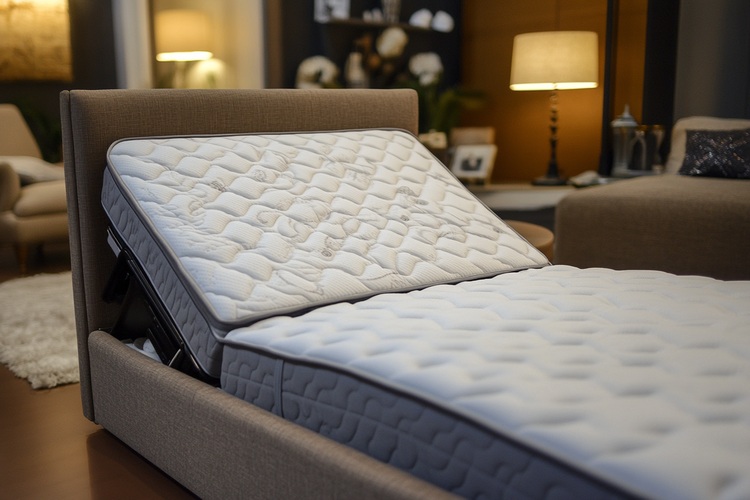Adjustable lighting to balance task needs and relaxation
Adjustable lighting helps a bedroom serve multiple roles: a place for focused tasks, a space for winding down, and an environment that supports sleep quality. Thoughtful control of brightness, color temperature, and placement can reduce eye strain during evening tasks while promoting physiological cues for relaxation. This brief summary shows practical strategies to create a flexible lighting plan that pairs with other comfort factors like temperature, air quality, and acoustics.

Adjustable lighting can help a bedroom serve multiple roles: a workspace, a reading nook, and a sanctuary for sleep. Thoughtful layering of light—ambient, task, and accent—combined with controls for brightness and color temperature lets you support short-term alertness without compromising evening relaxation. Fixtures, placement, and light temperature also interact with room temperature, air quality, and materials; planning lighting as part of an integrated bedroom strategy improves both function and comfort.
How does lighting affect sleep?
Light is a primary cue for the circadian system: blue-rich, bright light tends to signal wakefulness, while warm, low-intensity light supports melatonin production and relaxation. Evening exposure to bright cool light can delay sleep onset and reduce sleep quality, so avoid high-intensity overhead lighting late at night. Use warm-toned bedside lamps and dimmers in the evening, and position lights to minimize direct glare into the sleeping area. These adjustments support natural sleep signals while still allowing short evening tasks.
Which lighting supports tasks and relaxation?
A layered approach provides versatility: ambient overhead lighting for general movement, adjustable task lights for reading or focused work, and accent lights to set mood. Task lights should be directed and glare-controlled; adjustable arms or swivel heads help maintain ergonomics while reducing eye strain. Smart bulbs or dimmer switches that change both brightness and color temperature let you shift from cool, task-oriented light to warm, restful hues without swapping fixtures, enabling quick transitions as activities change.
Temperature and ventilation considerations
Perceived comfort from lighting is linked to temperature and airflow. LEDs are energy-efficient and emit less heat than filament bulbs, helping maintain a stable bedroom temperature that promotes sleep. Cooler room temperatures generally favor sleep onset; ensure ventilation provides fresh air circulation without drafts that cause noise or discomfort. Place lighting so it does not obstruct air vents or interfere with airflow from windows or mechanical ventilation systems, and choose fixtures whose heat output aligns with your thermal comfort plan.
How to improve air quality and reduce allergens
Lighting choices interact with air quality and allergen management when you consider fixture design and materials. Enclosed fixtures and smooth, washable lampshades trap less dust and are easier to clean, reducing allergen build-up. Avoid fabric shades that shed and locate lights so they don’t sit above open storage where dust accumulates. Coordinate lighting placement with air-cleaning devices or ventilation paths to avoid obstructing circulation. Physical measures—regular cleaning, filtration, and humidity control—are primary for air quality, while thoughtful lighting supports a cleaner-feeling space.
Acoustics, layout, storage, and materials
Acoustics influence how comfortable a lit space feels: hard finishes reflect both sound and light, increasing glare and perceived brightness, while softer materials absorb sound and diffuse light for a cozier atmosphere. Arrange layout to separate task zones from the sleep area using furniture, rugs, or shelving, which helps define lighting needs for each zone. Use low-shedding materials for shades and storage to limit allergens, and position storage to reduce clutter that can create visual and acoustic distraction under bright task lights.
Mattress, pillows, ergonomics, and color
Lighting choices should complement mattress and pillow selection to support posture and comfort during seated tasks or reading. Adjustable bedside lights with focused beams reduce the need to lean forward or hold reading material close, protecting neck alignment. Wall color and lampshade tones alter perceived brightness: light-colored walls reflect more light and require lower outputs, while darker tones absorb light and encourage warmer, lower-intensity fixtures for relaxation. Aim for an ergonomic setup that pairs appropriate light with supportive bedding.
This article is for informational purposes only and should not be considered medical advice. Please consult a qualified healthcare professional for personalized guidance and treatment.
Conclusion Creating an adjustable lighting scheme makes a bedroom more adaptable to both focused activities and restorative sleep. Use layered fixtures, dimming and color temperature control, and attention to placement to balance task needs with relaxation cues. When lighting is coordinated with temperature, air quality, acoustics, storage, and ergonomic choices for mattress and pillows, the bedroom becomes a multifunctional, comfortable environment optimized for wellbeing.





